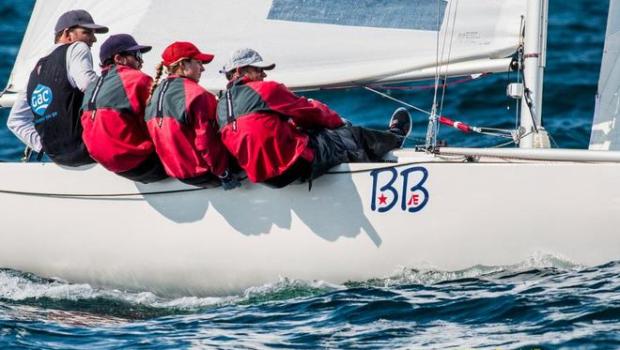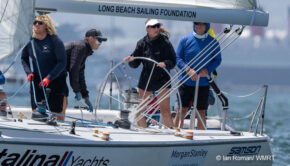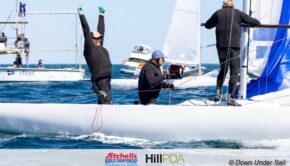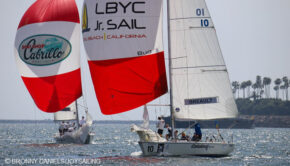Shifting gears between match racing and fleet racing
Published on October 13th, 2014
In their first full year on the Alpari World Match Racing Tour , Taylor Canfield (ISV) and the US One Sailing Team climbed the rank to claim the 2013 world title. The team seeks to repeat, and with recent wins at Chicago Match Cup (Sept. 17-22) and the Dutch Match Cup (Sept. 24-28) events, their chances are good with only two events remaining.
In between tour events, Taylor seeks out high-level fleet race events. As part of the winning 2014 Etchells World Championship team, Taylor discusses shifting gears between match racing and fleet racing…
While I have been competing in both match racing and fleet racing events lately, there is a time and place for both within each other. You can’t tell me that you have never match raced another boat during a fleet race, and you can definitely not tell me that you have never fleet raced in a match race.
While match racing, you must be comfortable with both match race tactics and fleet race tactics. On our team, I like to take on most of the match racing maneuvers and situations on my own; the reason being the information cannot be spoken and then processed quick enough to make the right move … much of it is just instinctual and reacting to the other boat’s moves which is learnt from being in the situations many times. As for the fleet racing, I leave those decisions more up to the crew, and in my case Rod Dawson.
Conditions are a very important factor to choosing between a match/fleet race approach. If it is flat water and steady wind, it is much safer to take on more of a match race approach. Maneuvers are less costly and you can really control the other boat by choosing where you want to be. However, if it is shifty and rough, maneuvers become more costly so picking the correct time tactically to execute maneuvers is very important aka more fleet racing tactics. Also when it is shifty, you don’t want to over match race and allow the trailing boat to choose their moments to sail a good tactical race.
When I am competing in a fleet race event, I try to switch from a small picture view to big picture. This has not only to do with the physical course size but also tactical decision making. While in match racing, the impact of one decision often times determines the outcome of the race. But in fleet racing, there are typically many decisions that determine your fate during the race.
A good example would be deciding whether or not to gybe set. In a match race, if you choose to gybe set, you have chosen your fate and you will become a hero or a zero. With the starboard roundings, when you gybe set your next decision is pre-determined by whether you will cross after the next gybe or not, or if you will lay into the finish etc. In fleet racing, the gybe set is only the first decision of many more to be made on the run. Each decision should be made with recognition of future decisions to be made.
There are many more opportunities to be made in fleet racing to help recover from a bad call or bad tactical decision. So I find it very important to stay consistent with big picture.









 We’ll keep your information safe.
We’ll keep your information safe.